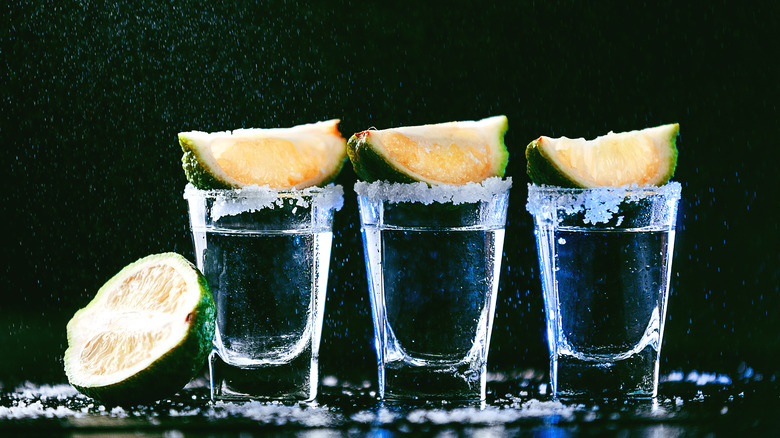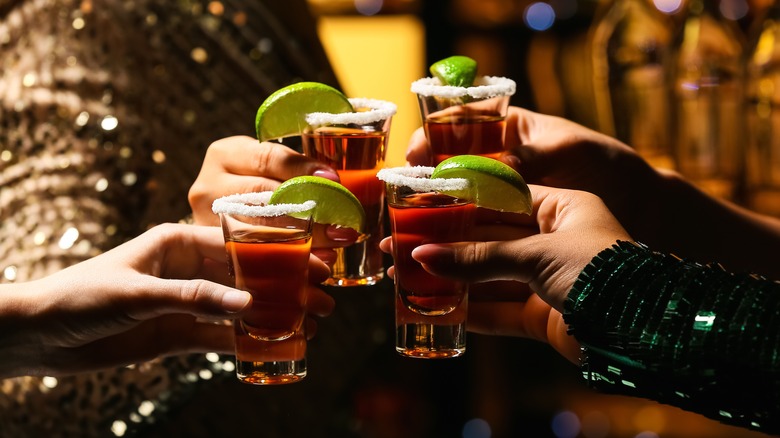The Story Behind Tequila's Iconic Name
Tequila is so iconic that it has its own song. However, the liquor's origin dates long before The Champs' single topped the charts in the late 1950s. Believe it or not, the idea of using the sap of the agave plant as a beverage is thought to have originated with the Olmecs civilization that inhabited the lowlands of Mexico in 1000 B.C.
The first records of a beverage made from an agave plant are pictograms found on stone walls from around 200 A.D., but it wasn't called tequila yet. Instead, the Aztecs referred to it as pulque. They used it for such purposes as sedating ritualistic sacrifice victims and celebrating heroism.
It wasn't until roughly 1,300 years later, when the Spanish conquered the Aztecs, that distilling came into the picture. It is commonly believed that the Spaniards elevated the alcohol content of agave nectar by using primitive mud stills when brandy supplies ran low, creating mezcal. This paved the way for a large-scale distillery. It was built in Tequila, Jalisco, a town in Mexico. Thus, tequila was born.
What makes tequila tequila?
When you buy tequila, one of the first things you may notice is the wide variety on the shelves. This may cause you to think that the word "tequila" is a generic term like beer. However, the way tequila is made and where it comes from are the two key factors that make the beverage unique.
First, tequila can only be made by fermenting and distilling juice that comes from the blue agave plant. This juice is called aguamiel, and it requires anywhere from seven to ten years of growth before harvesting. To be called tequila, a spirit must contain at least 51 percent blue agave plant distillate.
Second, and just as vital, to be called tequila, the beverage must be distilled in Mexico. The Tequila Regulatory Council is very strict on this. That is why you will never find American tequila. And if you do, you can be sure it is not authentic.

